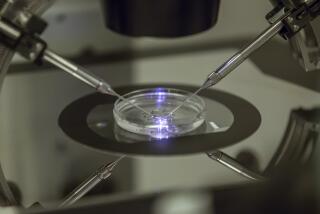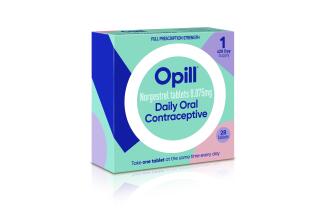London Fertility Treatments a Bargain : Medicine: Would-be parents from U.S. sometimes come to Britain to save a bundle on what they hope will produce another little bundle. Cost is less than half as much as in the States.
- Share via
LONDON — Diane Clegg, a 35-year-old American, dearly hopes to become pregnant before she moves back to Atlanta in January. She can’t afford it at home.
Clegg is having “in vitro” fertilization, the “test-tube baby” technique which costs more than twice as much in the United States as in Britain, where it was invented 17 years ago.
Though prices and success rates vary, one in-vitro fertilization (IVF) attempt typically costs about $8,000 in the United States compared with $3,500 in private centers here--and sometimes Britain’s National Health Service covers part of the cost.
Many American clinics charge $10,000 or more.
IVF costs reflect the same factors that make medical care more expensive in the United States than in Britain. Americans demand more tests, doctors pay higher malpractice insurance premiums, and drugs cost more.
The chances of a successful pregnancy from the procedure in either country is roughly one in five. Fertility treatment ranges from one to nine IVF attempts, or even more.
Clegg’s American insurance covers three attempts. She has had two failures.
“If it doesn’t work next time, we’ll have to really think about it, but we probably won’t do it on our own money in the States,” said Clegg, who had her first child with IVF in London. “I might fly back here.”
She’s not alone.
“We do have a few patients who come from the U.S. They come here and have a mini-break, get down to London, and make a holiday of it,” said Dr. Peter R. Brinsden, medical director of Bourn Hall Clinic in Cambridge, where the world’s first test-tube baby was born in 1978.
“I’ve thought about setting up a package deal but we got a hostile reaction from the U.S.,” said Brinsden. “It’s very lucrative and competitive over there.”
Treatments can be taken in long weekends.
The crucial days are around the time of ovulation, when patients get an ultrasound and then the operation to remove eggs, which are fertilized outside the body, then implanted in the womb. Other blood tests or ultrasounds can be done by physicians in the United States.
Wendy Harding, 33, had one baby through IVF when she lived in London two years ago and plans to try for another soon.
“I called the fertility clinics in the States and got the brochures,” said Harding. “I had no idea about the costs.”
If pregnancy was guaranteed, she said, she might pay the U.S. cost. But given the odds, she said she would advise women to go to London.
“Any procedure will be higher in the U.S. . . . Surgeons cost more, nurses cost more . . . there’s more technology in every department, but [for IVF] you are probably not getting better success rates,” said Peter Neumann, a researcher at the Harvard School of Public Health who has investigated IVF costs.
A month of fertility drugs costs about $2,000 in the United States compared to about $600 in Britain.
Pergonal, the leading fertility drug sold by Swiss drug-makers Ares-Serono, costs about $25 a dose in Britain compared with $65 in the United States. A woman may take between 20 to 40 doses, or more, for one cycle of treatment--along with other drugs.
Cost-shifting is also a factor. Hospitals need profit-making departments to make up for profit-losing ones. And IVF is a money-maker.
Prices have been declining in the United States and will continue to do so, said Dr. Alan DeCherney, immediate past president of the American Society of Reproductive Medicine and chairman of Obstetrics and Gynecology at Tufts University.
Insurance will drive down the costs, said DeCherney. Ten states now require that insurance companies offer a policy that covers fertility treatments. But employers do not have to choose that package, and the vast majority of women are not covered.
More to Read
Sign up for Essential California
The most important California stories and recommendations in your inbox every morning.
You may occasionally receive promotional content from the Los Angeles Times.













